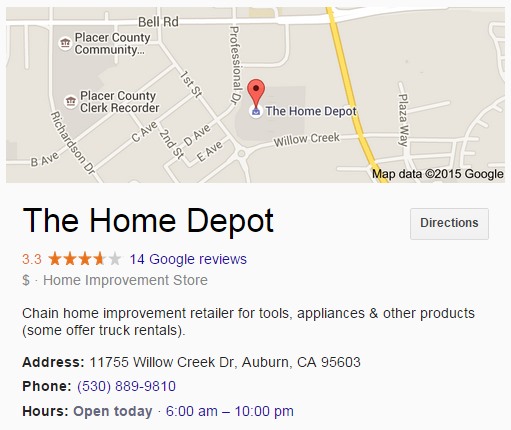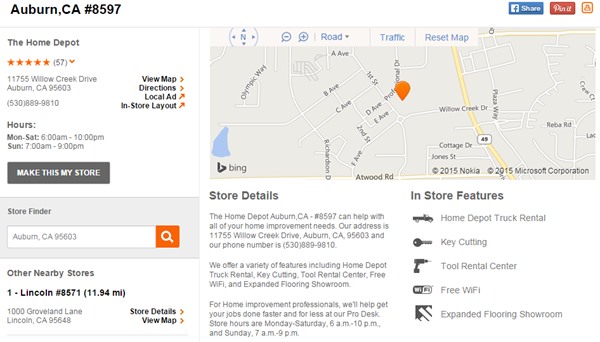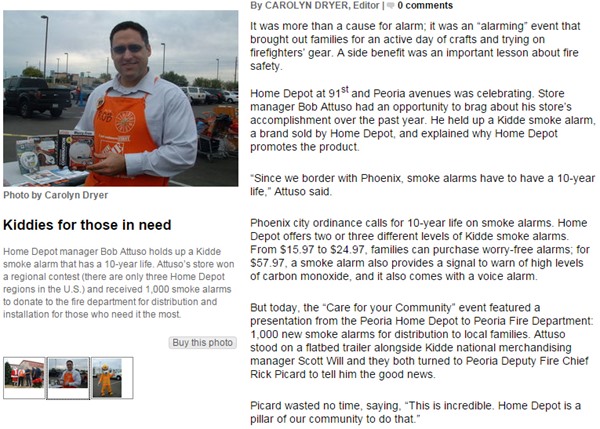Best Practices For Optimizing Your Retail Chain For Local Search

Whether your retail chain has five locations or five hundred, it is important to ensure each location is optimized for local search across both mobile and web channels to provide the necessary details that your potential customers need.
Understanding The Search Needs Of Your Audience
To best optimize for local search, you should first consider the intent of your audience and what they are expecting when searching for your products. Customers that conduct local searches are often looking for the address of a business, the hours of operation, the phone number, or to confirm the price and availability of a product in store.
Google and other search engine algorithms have evolved to cater to these common local searches and reward sites that have most relevant information to answer these queries. To better prepare your company, start by putting yourself in the shoes of your customers and ask how you can provide the best answers to fulfill their search needs. In other words, start researching popular keywords and applying that data into your SEO and content campaigns.
For example, a shopper looking to remodel their home in Auburn, California may search, “Auburn CA Home Improvement Store”. Google then understands to propagate the most relevant information that the customer is likely looking to receive, and the results are as follows.

Home Depot is well positioned in this search because they have included the keywords, “Home Improvement” in their description and, while a broad topic, this is likely a common search term for their audience. In addition, they have listed their store’s physical address in Auburn, California to fulfill the location needs of the search query.
Optimizing Your Web Content For Local Search
Generally, the first step to optimizing for local search is including your company name, phone number, business hours and company address in your website’s metadata and throughout you contact pages. However, when managing local search for a larger retail chain with multiple locations, this process can get much more complicated.
To inform search engines that you have more than a single location, you should create content around your local sites within your domain. These pages can be designed similarly, but each should highlight the unique characteristics of each of your brick-and-mortar locations in addition to including local information such as physical address, phone number and business hours.
Heading back to the Home Depot example, if we continue with the search, we can see that the information Google propagated in the search is also found within a local page that Home Depot created for their Auburn location.

You’ll notice that each page includes the physical address, a nearby physical address, store details, a map and in store features, which are likely to be common searches for the area. It’s important to notice that these local sites are included inside the company's primary domain and not within their own microsites.
In the past, some businesses have tried to game the search system by creating multiple websites and including their target location in the domain, such as, yourstoresacramento.com, , yourstorereno.com etc. Search engines consider this unnecessary and this strategy can potentially damage your search reputation.
Increase Local Community Involvement
Another best practice for improving your local search efforts is to increase your involvement within each local community that you are targeting. Implement policies to encourage management and other employees to join local community groups, social gatherings and consider participating in the local chamber of commerce.
Joining these organizations can help build brand recognition and credibility in the communities where you operate and in addition can provide link building opportunities that may improve your local search performance. Also, we shouldn’t fail to mention that genuinely participating and giving back to your community is socially good and generally the right thing to do.
For example, be actively participating in the community and giving back when applicable, you can gain recognition within the local news publications and media outlets. Often times these publishers maintain an elevated local ranking within the search engines and associating your brand with them can improve your local SEO.

Additionally, you can increase your local search presence by submitting your site information to the search engines directly. Make sure that you try these features for a variety of local listing sites such as, Yelp, Angie’s List, Yahoo Local, Bing Places and Google Listings as well as other local citation sites.
Depending on how many retail stores your business has, it might be necessary to use Moz Local, Yext, LocalHub or another local listing service that can properly automate the process of having all your locations listed across the local search engines.
To better optimize for your audience, you should think about both broad and specific keywords that customers are likely to search when looking for your products and then incorporate that information into local sites for each of your brick-and-mortar locations when applicable.
Additionally, plan to increase community involvement and implement policies to encourage employees to actively participate with local organizations. By following these best practices, your retail chain can be better prepared to achieve success within local search.
Make sure to also download the eTail agenda to discover all of the great activities, speakers, & sessions planned for this year.
Download the latest eTail agenda
![]() About Brian Honigman: Brian Honigman is a content marketing consultant and the CEO of Honigman Media. He's a regular contributor to the Wall Street Journal, Forbes and others. Follow him on Twitter @BrianHonigman
About Brian Honigman: Brian Honigman is a content marketing consultant and the CEO of Honigman Media. He's a regular contributor to the Wall Street Journal, Forbes and others. Follow him on Twitter @BrianHonigman

Sailthru is leading provider of email and personalization software for the world’s fastest growing retailers including RentTheRunway, JustFab and Alex and Ani. Through 1:1 relationships, our customers reduce churn and drive higher email revenue and customer lifetime value.